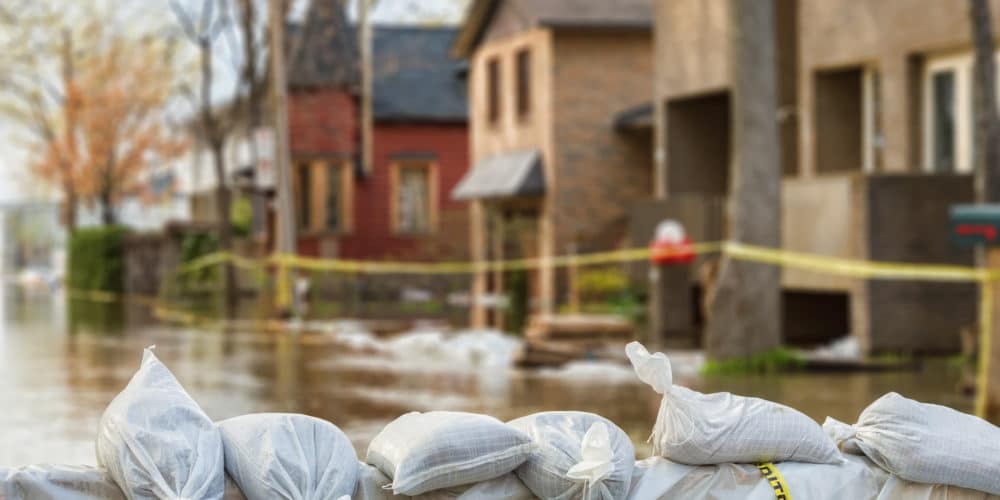
Climate change promises to bring more frequent and extreme weather and of course more floods. According to the Environment Agency winter rainfall is set to increase by a staggering 59% by 2050.
I look at Flood Risk Management as a jigsaw of many pieces, all working together to reduce flood risk. With the extreme rainfall we have been experiencing in recent years, pieces of that jigsaw have been overtopped, overwhelmed, compromised, and saturated. I make no apologies for focusing on what I consider to be the centre of that jigsaw; our homes and our businesses, which are on the receiving end of the floodwater.
I am a passionate advocate for Property Flood Resilience – which essentially means taking steps to reduce the impact a flood can have at a property level using a variety of measures and methods – but what if those who find themselves at risk just cannot afford to take those steps? Those who live in ‘flood poverty.’
With the huge hype in the cost of living, hard choices will have to be made, food on the table or heating on, or flood insurance? I’m pretty sure that many people hardest hit will have some tough decisions to make, and household insurance could be one of the expenditures to be axed from a household budget. Will the socially vulnerable, such as those whose financial outgoings, on an already limited income have increased, be abandoned to cope alone? As a result, they may sadly face a life living in fear of ‘flood poverty.’
If people are unable to afford flood Insurance, they will most definitely be unable to buy Property Flood Resilience Products! Until grants for individual Property Flood Resilience becomes widely available (and with the rising threat that flooding poses, I sincerely hope it does), what can be done to reduce the awful impact a flood can have?
When we went into the first Covid-19 lockdown, communities immediately rallied round to support those most vulnerable. Many informal groups were set up on Facebook and indeed, when a flood occurs, similar groups are formed. We, as communities, know where most vulnerable people are; it’s now time to build on that and make it a lasting legacy – a positive out of a negative.
Over the years, I have encouraged the development of ‘flood buddies,’ which involves people who are not located in a flood risk area, pairing up to support vulnerable people who are. So, when a Flood Warning does come, help can immediately be targeted to those most in need.
Preparing for a flood is essential and can make a huge difference to damage reduction. Signing up for a FREE Environment Agency flood warning is so important. You can then receive a call on the landline, mobile phone, text, and email when the Environment Agency issue a flood warning or alert – it’s easy to do online at https://www.gov.uk/sign-up-for-flood-warnings or call Floodline on 0345 988 1188. Perhaps friendly volunteers can also support others to do that too.
Planning in advance is essential: consider what you would do when that warning arrives, where you’ll move your belongings to, what needs to be switched off. Also, get your children involved, as the last thing they want is to lose their precious toys. My young children lost theirs and it really added to the upset my family experienced.
Sadly, the usual ‘go to’ for flood protection, the humble and inefficient sandbags just don’t work. Recently I put four sandbags (which is the amount households tend to receive from a local authority) to evaluate in an accredited British Standard Institute testing tank. They failed in only 59 seconds. I then built a barrier of ten sandbags and that failed in 2 minutes 5 seconds!
So, what can be done cheaply to reduce the horrible damage a flood can do to a home?
The following list of inexpensive practical steps that can be taken will give more time to move your belongings and may reduce the impact a flood will have:
- Fit waterproof tape, which sticks to damp surfaces and tape-up the cracks around and under your external doors to just under a metre (available from most hardware or DIY stores).
- For extra protection tape a polythene sheet over your external doors and weight this down with plastic shopping bags filled earth from your garden.
- For a more permanent solution screw plastic secondary glazing runners either side of your external door frame cut a piece of marine ply to size and drop it in. If time permits, run a seal of silicone around all the edges.
- Use the waterproof tape to cover your external air bricks.
- Make sure gaps in brickwork, for instance where your wastewater pipes come through, are sealed with silicone sealer.
- To prevent wastewater backing up through your ground-floor toilets and sinks, put a tightly knotted double thick bin liner filled with sand or soil into your loo. Make sure it’s big enough that it doesn’t go down the loo and heavy enough that it will stay in place. Put plugs in sinks and weight down similarly and tape up the overflow. You will get some leakage, but these measures may help keep the worst out.
Whilst none of the above are as good as using Kitemarked flood products, as the saying goes, ‘every little helps’. Knowing your flood risk and preparing for a flood is important for everyone and can help reduce the appalling misery being flooded brings.
By Mary Dhonau OBE
Further reading: How to recover from a flood, if you don’t have flood insurance Pg. 13
